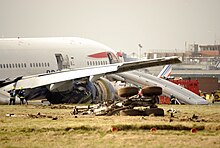Emergency
Understanding Emergencies:
- An emergency is defined as an immediate threat to life, health, property, or the environment.
- It results in loss of life, health issues, property damage, or environmental harm.
- Emergencies have a high probability of escalating to cause immediate danger.
- State statutes define emergencies as conditions where life, health, or property is in jeopardy.
- Agencies prioritize human health, life, and property over environmental impacts.
Types of Emergencies:
- Emergencies include dangers to life like medical emergencies and natural disasters.
- Agencies prioritize emergencies affecting human life as the highest priority.
- Health emergencies, while not immediately life-threatening, can have serious implications.
- Health emergencies encompass incidents like broken limbs that require immediate intervention.
- Environmental emergencies impact natural surroundings and wildlife.
Emergency Response Systems:
- Agencies worldwide classify incidents to allocate resources effectively.
- Sub-classifications are assigned to prioritize incidents with the most risk.
- Examples include the Advanced Medical Priority Dispatch System (AMPDS) for ambulance services.
- Emergency Medical Dispatch (EMD) prioritizes medical calls based on urgency.
- Various agencies, including government-operated, private companies, or voluntary organizations, are involved in dealing with emergencies.
Summoning Emergency Services:
- Most countries have designated emergency telephone numbers like 911 (US), 999 (UK), 112 (Europe), and 000 (Australia).
- Mobile phones can also dial emergency services, regardless of the network or locked keyboard.
- Provision of service varies by country and network.
- Civil emergency services respond quickly to infrastructure failures, such as electricity and gas services.
- Domestic emergency services provide pay-per-use assistance for health or property risks not qualifying for official response.
Emergency Action and Management:
- Emergency Action Principles (EAP) guide rescuers in varied emergencies to prevent becoming secondary victims.
- Rescuers must assess the situation for danger before taking action.
- Emergency services follow protocols before, during, and after emergencies, including planning, response, recovery, and mitigation phases.
- Governments can declare a state of emergency in major incidents, granting extensive powers over citizens’ daily lives.
- Historical developments, government guidelines, emergency response documents, and preparedness information contribute to effective emergency management.
An emergency is an urgent, unexpected, and usually dangerous situation that poses an immediate risk to health, life, property, or environment and requires immediate action. Most emergencies require urgent intervention to prevent a worsening of the situation, although in some situations, mitigation may not be possible and agencies may only be able to offer palliative care for the aftermath.


While some emergencies are self-evident (such as a natural disaster that threatens many lives), many smaller incidents require that an observer (or affected party) decide whether it qualifies as an emergency. The precise definition of an emergency, the agencies involved and the procedures used, vary by jurisdiction, and this is usually set by the government, whose agencies (emergency services) are responsible for emergency planning and management.
GD Garage Door Service MN • 651-373-0970
